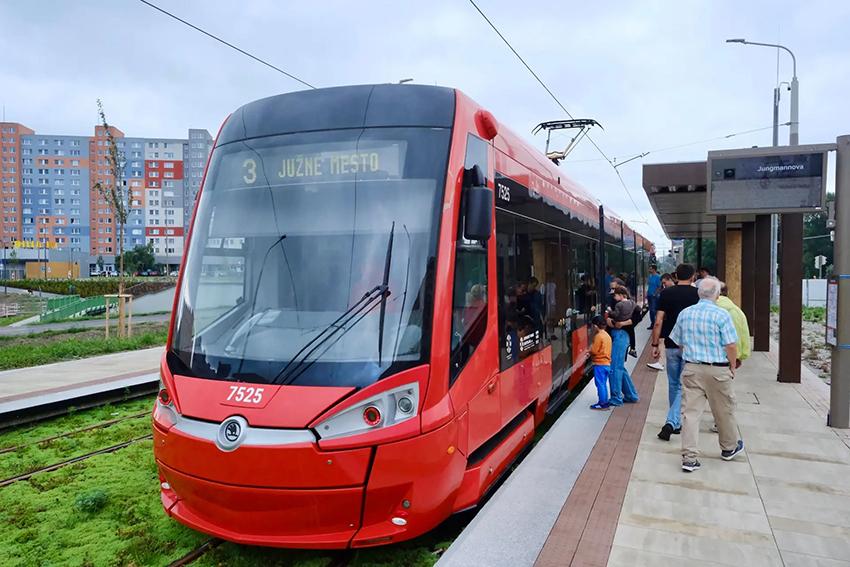Bratislava launches long-awaited tram line through Petržalka
A major public transport milestone was reached today with the launch of tram service through Petržalka, Slovakia’s largest housing estate. The completion of this new tram line marks the end of a decades-long wait for a modern transit connection between Petržalka and the city centre.
The new infrastructure offers improved public transport access and includes upgraded roads, pavements, and a 6-kilometre dedicated cycling route. City officials anticipate that the line will ease daily commutes, enhance mobility across the Danube, and raise the overall quality of urban life in the capital.
Mayor Matúš Vallo highlighted the project’s significance, thanking residents for their patience and acknowledging the complex implementation process. “We faced numerous challenges, but the outcome is a transport system that benefits the entire city,” said Vallo. He also credited the European Union and the Slovak Ministry of Transport for financial support.
The tram line—designated as Line 3—is expected to become the city’s most frequented, with nearly 500 connections per day. It is designed to integrate with local bus routes to ensure easy access from areas outside the tram corridor. Transit infrastructure, including combined bus and tram stops, has been strategically placed to maximize convenience and safety for users.
Jozef Ráž, Minister of Transport, confirmed that the project received €86 million in funding, including €73 million from EU sources and €8.6 million from the state budget. He emphasized that rail-based solutions like the Petržalka tram are a core part of the government’s sustainable urban transport strategy.
Juraj Droba, Chairman of the Bratislava Self-Governing Region, described the tram line as a key step toward rebalancing public and private transport in the region. Currently, about three-quarters of commuters rely on private cars. Regional authorities are aiming for a 50:50 modal split through a Sustainable Mobility Plan, in which projects like the Petržalka tram play a central role.
Iveta Jančoková, Deputy Mayor of Petržalka, expressed hope that the tram extension will boost both local mobility and inter-district connectivity, encouraging visits to Petržalka for cultural and recreational activities.
Martin Rybanský, Chair of the Board of Bratislava’s Transport Company, said the tram line will provide fast, ecological transport. “We aim to offer a public transport system that is a real alternative to car use,” he added.
A representative of the European Commission’s office in Slovakia emphasized that the tram line demonstrates the tangible benefits of EU membership, calling it an example of improved connectivity, sustainability, and quality of life supported by European funds.
Construction on the line began in late 2021 and faced numerous delays due to COVID-19, inflationary pressures linked to the war in Ukraine, and unexpected site conditions, including hazardous waste, wartime remnants, and structural obstacles. Despite these setbacks, the project was completed and began operation as scheduled.
In addition to the tram line itself, the development includes a new 6 km segregated cycle path connecting Petržalka to the city centre. Several roads and intersections were reconfigured, and new bridges were constructed, including a major crossing at Rusovská Road and a 110-metre tram bridge near the Parish Church of the Holy Family.
Environmental considerations were also incorporated. Over 22,000 m² of green track cover has been installed, along with more than 1,500 trees and 7,000 m² of shrubbery planted along the corridor. Additional trees and bushes were planted as part of offset requirements, and green roofs have been added to tram shelters.
While some finishing work along the route remains, the tram is now fully operational. Attention is shifting to the modernization of the Ružinov tram line—one of the city’s remaining radial routes—with procurement for construction already underway.
The project was co-financed by the European Union under the Programme Slovakia.
Source & Photo: Bratislava.sk









